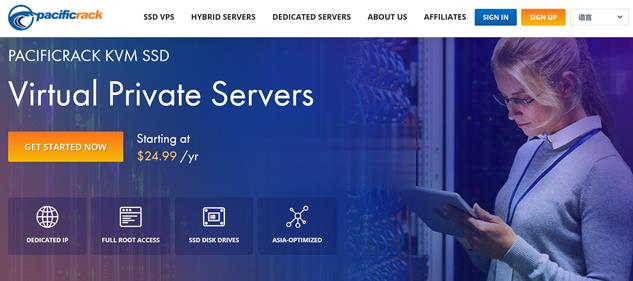June利率-了解欧洲美元期货【英文】.
INTEREST RATES
Understanding Eurodollar Futures
FEBRUARY 14,2013
John W.Labus zewski
Michael Kamradt
David Gibbs
Managing Director
Executive Dire ctor Directo r
Research&Product Development 312-466-7469 Interest Rate Products 312-466-
7473
Product Marketing 312-207-2591
CME Eurodollar futures have achieved remarkable success since their debut inDecember 1981.Much of this growth may directly be attributed to the fact thatEurodo llar futures represent fundamental building b lo cks o f the interest rate marketp lace.Indeed, they may be deployed in any number of ways to achieve diverse objectives.
This article is intended to provide an understanding regarding how and whyEurodollar futures may be used to achieve these diverse ends.We commence with somebackground on the fundamental nature of Eurodollar futures including a discussion ofpricing and arbitrage relationships.We move on to an explanation of how Eurodollarfutures may be used to take advantage of expectations regarding the changing shape ofthe yield curve or dynamic credit considerations.
Finally,we discuss the symbiotic relationshipbetween Eurodo llar futures and over-the-counter
(OTC interest rate swap s (IRS. In particular,Eurodo llar futures are o ften used toprice and to hedge interest rate swaps with good effect.
Pricing and Quotation
Eurodo llar futures are b ased on a$1 million face-value,3-month maturityEurodollar Time Deposit.They are settled in cash on the 2nd London bank business dayprior to the 3rd Wednesday of the contract month by reference to the British Banker’s
Association(BBA Interest Settlement Rate forthree-month Eurodollar Interbank Time Depo sits.
These contracts mature during the months o f March,June,Septemb er,or December,extending outward 10 years into the future.However, the exchange also offers“serial”contract months in the four nearby months that do not fall into the March quarterly cycle.See Table 1 below for contract specifications.
Where once trading was largely conducted on the floor of the exchange usingtraditional open outcry methods during re gular daylight hours–today, trading activity islargely conducted on the CME Globex®electronic trading platform on nearly an aroundthe clockbasis.
These contracts are quoted in terms of the“IMM index.”1 The IMM index is equalto 100 less the yield on the security.
=100.000−
E.g., if the yield equals 0.750%, the IMM index is quoted as 99.250.
=100.000−0.750%=99.250
Ifthe value of the futures contract should fluctuateby one basis point(0.01%, this equates to a$25.00 movement in the contract value.This maybe confirmed by calculated the basis point value
(BPV of a$1 million face value,90-day money market instrument into the followingformula.=#0.01%=$1,000,000#0.01%=$25.00
The minimum allowable price fluctuation,or“tick”size, is generally established at one-half ofone basis point,or 0.005%.Based on a$1 million face-value 90-day instrument, this equates to$12.50.However, in the nearbyexpiring contract month, the minimum price fluctuation is set at one-quarter basis point,or 0.0025%,equating to$6.25 per contract.
1
The IMM,or International Monetary Market,wasestablished as a division of the CME many years ago.
The distinction is seldom made today because CMEoperates as a unified entity,but re ferenc es to IMMpersist today.
500,000
1,000,000
1,500,0002,000,0002,500,0003,000,000
3,500,000
4,000,0002000
2001
2002
2003
2004
2005
2006
2007
2008
2009
2010
2011
2012
Eurodo llar Average Daily Vo lume
Futures Options
As seen in Table 2 below,March 2014 Eurodollar futures advanced by 1.5 b asispoints on January 30,2013 to settle the day at a price of 99.49.Noting that each basispoint is worth$25 per contract based on a$1 million 90-day instrument, this implies anincrease in value of$37.50 for the day.
Shape ofYield Curve
Pricing patterns in the Eurodollar futures market are very much a reflection ormirror of conditions prevailing in the money markets and moving outward on the yieldcurve.But before we explain how Eurodollar futures pricing patterns are kept in lockstepwith the yield curve, let us consider that the shape of the yield curve may be interpretedas an indicator of the direction in which the market as a whole believes interest rates mayfluctuate.
Three fundamental theories are referenced to explain the shape ofthe yield curve–(1 the expectations hypothesis; (2 the liquidity hypothesis;and, (3 the segmentationhypothesis.
Let’s start with the assumption that the yield curve is flat. I.e., short-term andlonger-term interest rates are equivalent and investors are expressing no particularpreference for securities on the basis of maturity.The expectations hypothesis modifiesthis assumption with the supposition that rational investors may be expected to alter thecomposition of their fixed-income portfolios to reflect their beliefs with respect to thefuture direction o f interest rates.
Thus, investors move from long-term into short-term securities in anticipation ofrising rates and falling fixed-income security prices,noting that the value of long-terminstruments reacts more sharply to shifting rates than short-term instruments or by
moving from short-term into long-term securities in anticipation of falling rates and risingfixed-income prices.
Yields expected to rise Yield curve is steep
Yields expected to fall Yield curve is flat or inverted
In the process of shortening the maturity of one’s portfolio, investors bid up theprice of short-term securities and drive down the price of long-term securities.As a result,short-term yields decline and long-term yields rise- the yield curve steepens. In theprocess of extending maturities, the opposite occurs and the yield curve flattens or inverts.
2
The liquidity hypothesis modifies our initial assumption that investors may generallybe indifferent between short-and long-term investments in a stable rate environment.Rather,we must assume that investors generally prefer short-over long-term securities tothe extent that short-term securities roll over frequently,offering a measure of liquidityby virtue of the fact that one’s principal is redeemed at a relatively short-term maturityd ate.
As such, long-term securities must pay a liquidity premium to attract investment,and long-term yields typically exceed short-term yields,a natural upward bias to theshape of the curve.
Finally, the segmentation hypothesis suggests that investors may be less than fullycapable of modifying the composition oftheir portfolios quickly and efficiently in order
to take advantage of anticipated yield fluctuations. In particular, investors sometimes faceinternally or externally imposed constraints: the investment policies of a pension
2 Although these observations are generally true, they may not be absolutely true.
E.g., the Fed had been pushing short-term rates higher in early 2005 while longer-termrates remained relatively stable.As such, the yield curve was in the process of flatteningwhile many analysts still expected the Fed to continue tightening.
0%
1%
2%
3%
4%
5%
6%
3
-
Mth
6
-
Mth
1-
Yr
2-
Yr
3-
Yr
5
Yr
- June利率-了解欧洲美元期货【英文】.相关文档
- 日期欧洲签证在职证明样本(英文)
- makingShortest History of Europe极简欧洲史英文原版
- 波斯尼亚欧洲国家英文名及音标
- terms欧洲合同法原则英文
- 英语欧洲英文
- 日期欧洲签证在职证明样本(英文)
PacificRack - 洛杉矶QN机房 低至年$7.2 同有站群多IP地址VPS主机
需要提前声明的是有网友反馈到,PacificRack 商家是不支持DD安装Windows系统的,他有安装后导致服务器被封的问题。确实有一些服务商是不允许的,我们尽可能的在服务商选择可以直接安装Windows系统套餐,毕竟DD安装的Win系统在使用上实际上也不够体验好。在前面有提到夏季促销的"PacificRack夏季促销PR-M系列和多IP站群VPS主机 年付低至19美元"有提到年付12美元的洛杉...

NameCheap黑色星期五和网络礼拜一
如果我们较早关注NameCheap商家的朋友应该记得前几年商家黑色星期五和网络星期一的时候大促采用的闪购活动,每一个小时轮番变化一次促销活动而且限量的。那时候会导致拥挤官网打不开迟缓的问题。从去年开始,包括今年,NameCheap商家比较直接的告诉你黑色星期五和网络星期一为期6天的活动。没有给你限量的活动,只有限时六天,这个是到11月29日。如果我们有需要新注册、转入域名的可以参加,优惠力度还是比...

炭云188元/年,上海CN2 VPS/2核/384MB内存/8GB空间/800GB流量/77Mbps端口/共享IP
炭云怎么样?炭云(之前的碳云),国人商家,正规公司(哈尔滨桓林信息技术有限公司),主机之家测评介绍过多次。现在上海CN2共享IP的VPS有一款特价,上海cn2 vps,2核/384MB内存/8GB空间/800GB流量/77Mbps端口/共享IP/Hyper-v,188元/年,特别适合电信网络。有需要的可以关注一下。点击进入:炭云官方网站地址炭云vps套餐:套餐cpu内存硬盘流量/带宽ip价格购买上...

-
有人在认真做事支持ipad模式ios8水土保持ios8支持ipad支持ipad勒索病毒win7补丁由于电脑没连接网络,所以成功躲过了勒索病毒,但最近要联网,要提前装什么补丁吗?我电脑断网好久了ipadwifiIpad怎么用移动无线上网ipad上网ipad上网速度很慢怎么回事?ipad上网新买的ipad怎么用。什么装程序 怎么上网